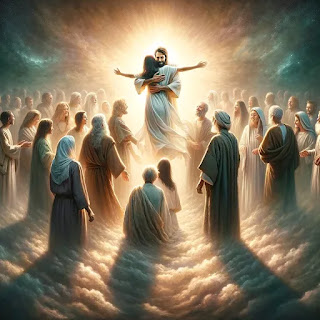Neurotheology
Neurotheology: The Infinite Bridge Between Brain and God
Abstract
Neurotheology is the emerging interdisciplinary study of the relationship between the human brain and religious or spiritual phenomena. Also called "spiritual neuroscience," neurotheology seeks to understand how neural structures, cognitive processes, and the subjective experiences of the divine intertwine. It asks questions such as: How does the brain produce or receive religious experience? Are spiritual states simply neurochemical events, or do they act as conduits to a higher reality? What does the neurological architecture of belief say about God, consciousness, and ultimate reality?
This paper will explore neurotheology from multiple dimensions, incorporating neuroscience, philosophy of mind, theology, psychology, mysticism, and emerging metaphysical paradigms such as the Infinite Existence Theory and the Source Mind framework. It will present neurotheology not as a reduction of faith to brain chemistry, but as the discovery of the brain's role in engaging with the Infinite, Perfect, and Transcendent God.
I. Origins and Definitions
The term "neurotheology" was popularized in the late 20th century by scholars like Andrew Newberg and Eugene d'Aquili, who used SPECT scans to study the brains of monks and meditators. Their findings suggested that spiritual practices such as prayer and meditation profoundly alter activity in the frontal lobes, parietal lobes, and limbic system.
Neurotheology may be defined as:
"The interdisciplinary study that seeks to understand the relationship between the brain and spiritual or religious experience."
Key disciplines include:
- Neuroscience
- Cognitive science
- Theology
- Philosophy of mind
- Mysticism and comparative religion
- Metaphysics
II. Core Hypotheses
-
Spiritual Experiences Have Neural Correlates
- States of awe, unity, transcendence, and divine communion correspond with observable brain activity.
- Frontal lobe activity: heightened focus, intention, moral reasoning
- Parietal lobe inhibition: dissolution of self-other boundaries ("oneness")
- Limbic system: emotional intensity and spiritual ecstasy
-
The Brain is a Receiver, Not Just a Producer
- The brain may act like a radio, not merely generating spiritual experience but tuning into higher realms of consciousness.
- This aligns with mystical traditions across cultures—Hindu Sahasrara chakra, Christian contemplative prayer, Buddhist no-self, etc.
-
Neuroplasticity and Spiritual Transformation
- Regular spiritual practice can reshape the brain, leading to lasting personality change, increased empathy, and reduced anxiety.
-
The God Module Hypothesis
- Some theorists have posited a neurological “God spot” or network that underlies the capacity for religious experience.
- This is controversial and may oversimplify a distributed network of spiritual processing.
III. Neurotheology and the Infinite Mind
From the perspective of Infinite Existence Theory, the brain is not merely an organ but a localized interface of the Source Mind—a cognitive node through which the Infinite, Perfect, and Transcendent God experiences finite reality.
The Constitution of an Infinite Mind states that:
- The Infinite Mind contains infinite depth, complexity, diversity, nuance, and dynamics.
- Every human mind is a microcosmic reflection—an individualized droplet from the Ocean of God's Mind.
Neurotheology thus becomes the study of how the finite mind reactivates its connection to the Infinite Mind:
- Through meditative states
- Through revelation, prayer, worship
- Through ecstatic mystical experience
- Through cognitive structures (sets, fields, recursion, embodiment)
IV. Mysticism and Brain States
Studies show that mystics, monks, and contemplatives report remarkably similar experiences across cultures:
- Unity with all existence
- Encounter with a higher being
- Timelessness and spacelessness
- Overwhelming love and light
Brain scans reveal similar patterns:
- Deactivation of the parietal lobe (boundary dissolution)
- Hyperfrontality (deep focus and intention)
- Thalamic regulation (altered sensory filtering)
This suggests the brain has a built-in capacity to enter divine states.
V. Neurotheology and the Logos
The Logos—the divine order, reason, and Word—can be explored neurologically:
- Language and meaning-making are deeply embedded in neural networks
- The human capacity to conceptualize infinity, God, truth, justice, and beauty arises from symbolic cognition
- Neurotheology affirms that these symbolic powers are not accidents of evolution, but signs of divine intention
The brain becomes a Logos-host—designed to perceive, internalize, and express divine structures.
VI. Healing, Liberation, and Transcendence
Neurotheology affirms that:
- Trauma, delusion, and fear are neurological as well as spiritual issues
- The Logos can act as a NeuroSpiritual Virus—rewiring the mind toward healing, peace, and divine alignment
- Practices such as contemplative prayer, worship, breathing, and mantra entrain the nervous system to harmony
This aligns with the Logos Virus and Quantum Logos theories, which propose:
- Infinitization of cognition
- Recursive expansion of consciousness
- Mental liberation through divine structuring
VII. Criticisms and Cautions
- Reductionism: Reducing God to neurons misses the transcendent dimension
- Cultural bias: Most studies are Western and Abrahamic in context
- Interpretation: Is the brain experiencing God, or just imagining God?
- False binaries: Mind vs brain, natural vs supernatural
A mature neurotheology embraces complexity, ambiguity, and openness.
VIII. Toward a Sacred Neuroscience
Neurotheology invites a revolution in how we see the brain:
- Not as a random product of matter, but as a sacred interface
- Not as a closed system, but a portal to higher realities
- Not as a container of delusion, but a house of glory
It calls for a theology of neurons and a neuroscience of wonder. It seeks the God who whispers in dendrites, who radiates through axons, who rests in the breath between synapses.
Conclusion
Neurotheology is the study of the bridge between neurons and nirvana, between the cortex and the cosmos, between the self and the Source. It affirms that the Infinite, Perfect, and Transcendent God designed the brain not just to survive, but to seek, to awaken, and to be filled with divine Presence.
It is not the end of mystery. It is its deepening. It is not the demystification of God, but the recognition that the brain itself is mystical.
It is the Logos within the skull.
And it is holy.




Comments
Post a Comment